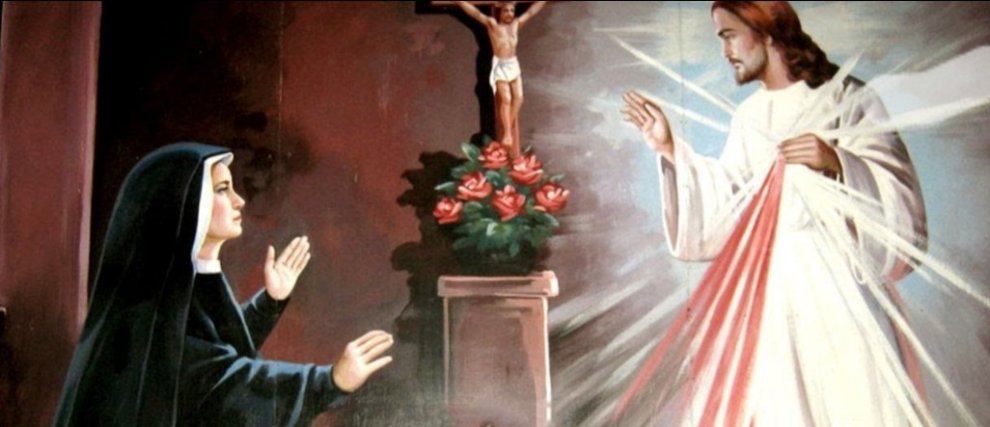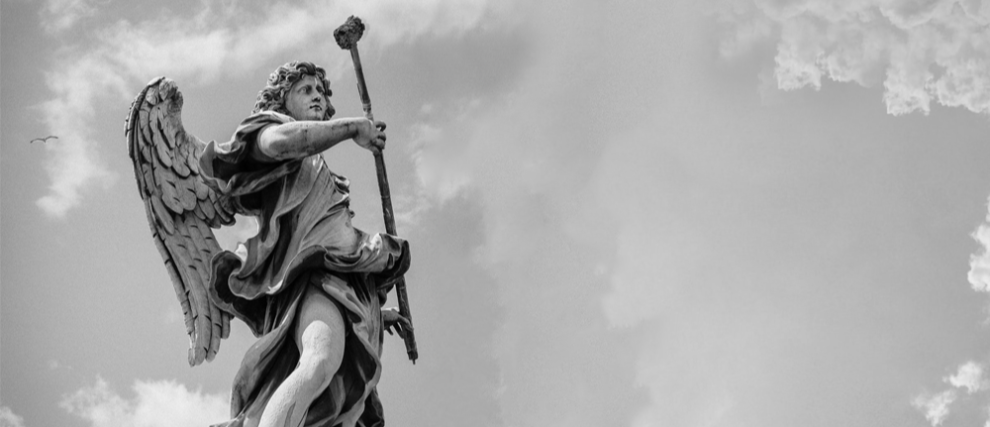Saint Faustina
Biography of Saint Faustina
Saint Faustina Kowalska is known as the great missionary of Divine Mercy. She was born on August 25th, 1905 in Glogowiec, Poland, and was named Helena.
She grew up in a peasant family of ten children and felt a strong calling from God at the age of seven. Yet she would silence this voice, her parents not welcoming her desire to be a nun. At 19, during a ball, she had a vision of Jesus flogged and covered in blood that made her understand that it was time to choose Him. That night, Helena left home for Warsaw to fulfill her vocation. She was accepted at the convent of the sisters of Our Lady of Mercy where she would be charged with humble household tasks (kitchen, garden, watch, etc.). Her first year of religious life was marked by the painful experience of the “dark night” she offered for the salvation of souls. A simple and devoted nun, nothing was obvious about her mystical life. Yet in secrecy, she received extraordinary graces; she had apparitions of Jesus, revelations, and the gift of prophecy. She then learned the mission that Jesus entrusted to her: to write all that he revealed to her in order to be the secretary of his Mercy. Through her, Jesus wanted to remind the world of his merciful love.
On the advice of her confessor, she began to report her mystical experiences in a Diary which would later become famous. Jesus gave her special devotions to his Divine Mercy. These include the Rosary of Divine Mercy, the Hour of Mercy, the
and the Feast of Mercy.A painting of Jesus was painted according to the description of Sister Faustina. Christ appears there with two great red and white rays emerging from his heart. Below the painting it is written “Jesus I trust in You”.
Sister Faustine died of tuberculosis on October 5th, 1938 in Krakow at the age of 33.
The radiance of her work would spread after her death with the apostles of Divine Mercy who will follow the charisma and mystical experience of Sister Faustina.
On April 30th, 2000, she was canonized by Pope John Paul II. He then instituted the feast of Mercy on the first Sunday after Easter, according to Jesus' request. Saint Faustina is celebrated on October 5th.
Saint Faustina's main work was her Diary
The Diary of Sister Faustina was written mainly between 1934 and 1938 in the form of a memoir. It reports the words of Jesus to the saint; she is only his secretary as Jesus calls her, but these are the words of Christ that can be read.
These writings reveal to us the depth of the spiritual life of Saint Faustina, whose soul was intimately united with God. The Diary reveals the special graces this humble nun was given: visions, revelations, the gift of prophecy, the gift of reading souls, invisible stigmata, the gift of bilocation, and the gift of mystical wedding.
Learn more about the Diary of Sister Faustina.
Saint Faustina's message: making known the immensity of divine mercy
God often uses very poor instruments to realize his greatest works. Saint Faustina is an example. She was specially chosen in the twentieth century to be the apostle of mercy. The message she conveys is for our time and is destined to be spread all over the Earth. Its importance is fundamental: to let the world know that God has a heart sensitive to human misery and suffering.
John Paul II gave universal influence to the message transmitted by Saint Faustina. As a pope, and moreover a Polish man, John Paul II greatly encouraged the knowledge of Sister Faustina and of the message she transmitted. Knowing the holiness of Faustina's life, he took her writings out of the archives and encouraged people to read and learn of the life of the young saint. He himself preached a lot on the theme of divine mercy, which was according to his words “the red thread that led his pontificate”.
Devotion to divine mercy: effective means that Jesus gives us
The hour of mercy
Jesus asked Sister Faustina to immerse herself in his mercy every day at 3 p.m., wherever she was. He says: “at this hour I cannot refuse anything to the one who prays to me by my passion”. Jesus proposes, if you have time, to trace the way of the cross or simply to meditate on your passion at this hour of grace.
Learn more about the hour of mercy.
The Rosary of Mercy
This is a prayer that consists of imploring God's mercy, very powerful for the conversion of sinners. Jesus encourages Saint Faustina to pray this rosary in any situation of insecurity or necessity, and especially to those in agony. There are many testimonies of grace received.
Learn more about the Rosary of Mercy.
The Sunday of Mercy
Jesus asked that this feast be instituted on the first Sunday after Easter. This feast is prepared with a
which Jesus taught to Sister Faustina, where one intercedes for each family of souls. It is a day of great graces, “he who approaches the Source of Life on that day will obtain a total remission of his sins,” says Jesus.The Painting of Merciful Jesus: A Source of Grace
Jesus appeared to Sister Faustina and asked her to have a painting of him made, as she saw him. Jesus appears there risen, glorious, coming to meet the sinner, while two great rays of light leave his heart. They are the sign of his infinite mercy. The words “Jesus, I trust in you " are written underneath.
The painting would be realized for the first time in 1934. Other representations would be made later still on the same model.
The Lord promises many graces before this painting: “I promise that the soul who honors this image will not be lost.”
Learn more about the painting of merciful Jesus.

